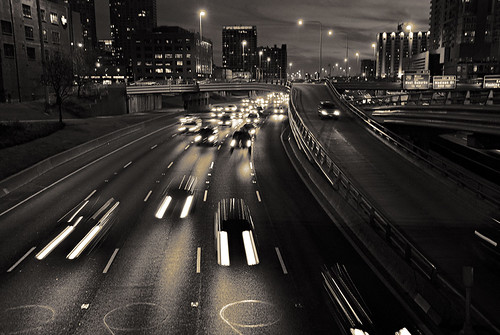I am on Tesla’s side on this: why should auto dealerships be in a position to decide whether to push sales of electric cars or not? Seems similar to me as in the old days when Apple Computer1 was relegated to back of the electronic stores like CompUSA and Sears, and consumers were often told by sales reps that it was foolish to purchase Apple computers as Apple was about to go out of business. Car dealers have a vested interest in selling gasoline cars – there are a lot more of those, and commission is commission.
I hope Tesla fights this to the bitter end, and to victory.
When electric-car company Tesla Motors Inc. started selling its flagship Model S luxury hatchback earlier this year, it eschewed the traditional dealership network to open its own stores.
But that’s not sitting well with U.S. auto dealers, who have controlled new-vehicle sales for nearly a century.
The nation’s roughly 18,000 new-car dealers got a cut of every one of the 12.8 million new cars and trucks sold in the U.S. last year, from the biggest domestic sport-utility vehicle to the tiniest Japanese import. It’s an exclusive arrangement that has made many of them very rich — and one that they’re not about to cede to some tiny Palo Alto automaker.
Some individual auto dealers and regional associations have already filed lawsuits attempting to block Tesla, which now operates 16 stores in 12 states. …
The upstart automaker’s battle with dealers is shedding light on a little-known practice that it contends amounts to legalized restriction on trade. The franchised new-car dealership system dates back to the start of the U.S. auto industry, when hundreds of manufacturers were fighting for market share. Setting up showrooms was expensive and time-consuming. So automakers sold other entrepreneurs the right to market their cars in specific cities.
Over time, car dealerships became crucial sources of employment and tax revenue for local communities. To prevent manufacturers from opening their own stores and undercutting neighborhood dealers, states developed laws governing the franchise relationship. Bottom line: Carmakers had to leave their retail sales to someone else.
Tesla isn’t buying it. The company wants to sell directly to consumers. That way it gets to keep the profit that dealers make on new-car sales. It’s also the only way an electric car will get a fair shake, co-founder and Chief Executive Elon Musk said.
“Existing franchise dealers have a fundamental conflict of interest between selling gasoline cars,” Musk said. “It is impossible for them to explain the advantages of going electric without simultaneously undermining their traditional business.”
A South African-born serial entrepreneur, who co-founded an Internet payment company that eventually become PayPal, Musk thrives on disrupting established industries.
(click here to continue reading Electric-car maker Tesla bucks traditional dealership network – chicagotribune.com.)
and this also sounds like Mr. Musk is taking a page from the Steve Jobs blueprint:
It’s hard to get thousands of individual dealers to adhere to consistent sales and customer service standards. That has hurt the industry’s image. Moreover, studies by market research firm J.D. Power and Associates and other organizations have repeatedly found that most car buyers dislike haggling with high-pressure salespeople.
Tesla sells its cars for a set price and Musk said his sales staff does not work on commission. The company is also steering clear of traditional auto rows and opening stores in upscale shopping areas.
Odds are I’ll never become filthy rich enough to purchase a Tesla – though one never knows – but I’ll be rooting for them to succeed.
Footnotes:- before they changed their name and became a manufacturer of iPhones and iPads [↩]


















